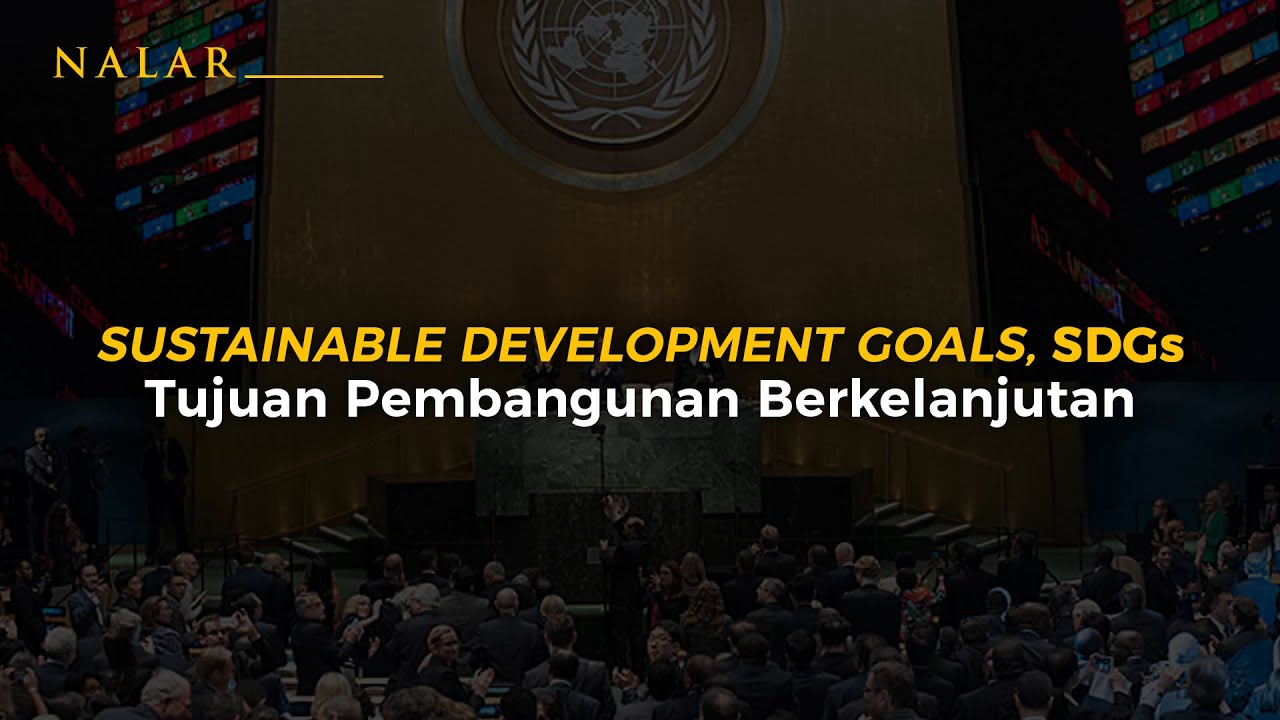SDG sectorial universality : all fields are covered
Summary
TLDRThe video discusses the transition from the Millennium Development Goals (MDGs) to the Sustainable Development Goals (SDGs), highlighting the limitations of the former and the comprehensive, integrative approach of the latter. It emphasizes the need for collaboration among nations and stakeholders to address a broad range of global issues, from poverty to environmental sustainability. The SDGs consist of 17 goals and 169 targets, requiring innovative solutions and effective monitoring, particularly in poorer countries. The speaker warns of challenges like resource constraints and SDG washing, while underscoring the importance of creativity and a shared commitment to sustainable development.
Takeaways
- 🌍 The Millennium Development Goals (MDGs) initially mobilized global action for development but had flaws, focusing mainly on poverty and not addressing systemic connections between issues.
- 📈 The Sustainable Development Goals (SDGs), adopted in 2015, emerged in a more complex global context, recognizing the need for a multi-polar world and addressing diverse global challenges.
- ⚖️ The SDGs emphasize a balanced approach among three pillars: economic, social, and environmental sustainability, reflecting a comprehensive vision for development.
- 📊 There are 17 SDGs and 169 targets, designed to ensure no critical issues are overlooked and to promote ambitious, transformative goals.
- 💧 Key targets include universal access to clean water by 2030 and mobilizing resources for biodiversity preservation, highlighting the urgency of environmental sustainability.
- 🤝 The development of the SDGs involved extensive international collaboration, with nearly 200 countries participating in consultations to ensure inclusivity.
- 🛠️ There is a significant emphasis on governance and partnerships as essential elements for combating disparities and achieving the SDGs.
- ⚠️ Criticism exists regarding the potential for 'SDG washing,' where goals are diluted or misused, stressing the importance of prioritization and coherence in implementation.
- 📉 Addressing resource limitations poses a major challenge for fulfilling the SDGs, requiring innovative models and approaches to sustainability.
- 📊 Effective monitoring and statistical capacity in poorer countries are crucial for tracking progress on the SDGs, emphasizing the need for strengthened statistical frameworks.
Q & A
What were the main achievements of the Millennium Development Goals (MDGs)?
-The MDGs led to significant mobilization on development issues, increased public funding for development, and notable improvements in areas such as education, maternal and child health, and the fight against communicable diseases.
What were the flaws of the Millennium Development Goals?
-The MDGs were criticized for being based on a traditional development approach that focused mainly on poverty, lacked a comprehensive vision of interconnected objectives, and failed to address the effects of previous structural adjustments that increased poverty.
How has the context changed since the adoption of the Sustainable Development Goals (SDGs)?
-Since the SDGs were adopted in 2015, the world has shifted from a binary north-south perspective to a multi-polar world, with emerging powers in the southern hemisphere and an increase in global threats and environmental issues.
What are the three pillars of sustainable development emphasized in the SDGs?
-The SDGs emphasize a balanced approach that integrates the economic, social, and environmental pillars of sustainable development.
Why are there 17 Sustainable Development Goals?
-There are 17 SDGs to ensure comprehensive coverage of various global challenges, reflecting the complexity of the world. While eight MDGs seemed sufficient, 17 were deemed necessary to address a wider range of issues.
What is the significance of the targets associated with the SDGs?
-The SDGs include 169 targets that illustrate the ambitious nature of the agenda, focusing on specific objectives such as universal access to clean water and financial resources for biodiversity preservation.
How was the Sustainable Development Agenda developed?
-The agenda was created through extensive political agreements among nearly 200 countries, with numerous consultations and negotiations to ensure that key subjects were included.
What is the risk associated with 'SDG washing'?
-The risk of 'SDG washing' arises when everything is labeled as SDG-related, leading to a dilution of the actual meaning of the goals, making it challenging to prioritize and implement them effectively.
What are some key challenges in fulfilling the SDG agenda?
-Key challenges include limited resources, the need for a clear roadmap for implementation, and the ability to produce accurate statistics in poorer countries to track progress.
What role do indicators play in the success of the SDGs?
-Indicators are crucial for monitoring progress toward the SDGs. The UN has established 241 follow-up indicators that will evolve with improvements in statistical science and must be tailored to each country's unique context.
Outlines

此内容仅限付费用户访问。 请升级后访问。
立即升级Mindmap

此内容仅限付费用户访问。 请升级后访问。
立即升级Keywords

此内容仅限付费用户访问。 请升级后访问。
立即升级Highlights

此内容仅限付费用户访问。 请升级后访问。
立即升级Transcripts

此内容仅限付费用户访问。 请升级后访问。
立即升级浏览更多相关视频

NALAR Ep. 47 APA ITU SUSTAINABLE DEVELOPMENT GOALS (TUJUAN PEMBANGUNAN BERKELANJUTAN)?

Episode 4: Origin Story of Sustainable Development Goals | Origin of SDGs | SDG Plus

أهداف التنمية المستدامة

NALAR Ep. 48. MENGIMPLEMENTASIKAN SDGs DI INDONESIA

Evaluation Snapshot: Millenium Development Goals

The United Nations Sustainable Development Summit: 17 Goals to Transform Our World
5.0 / 5 (0 votes)
